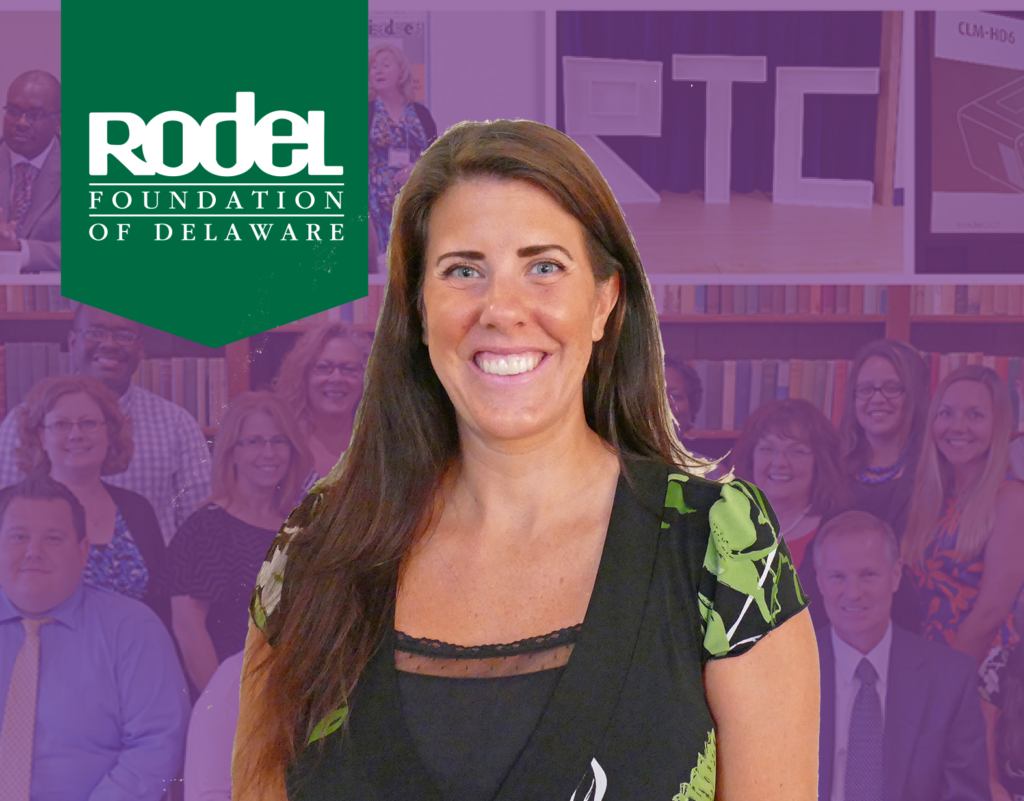Busting the Ed Tech Myths with Tara Saladyga
Tara Saladyga is a science teacher at Delcastle Technical High School, and was also an early adopter and expert in Schoology, the state’s digital Learning Management System. She coordinates Schoology professional development for teachers in her district and beyond.
Still, she hears the doubters when it comes to incorporating technology in the classroom. Below, she busts five pervasive ed tech myths.
Won’t students will “check out” if they know they can “hide behind” technology in the classroom?
MYTH: Once I started using Schoology in my classroom and blending my lessons to incorporate technology intentionally (using tools like Kahoot, Gizmos, EdPuzzle, Quizlet), one of the things I noticed was that my students were actually more engaged. I could use the technology as a tool to shift more of the responsibility for learning to my students, allowing me to become more of a facilitator for them. I’ve even noticed that some of the more complicated science concepts are easier for my students to grasp now, since they have time and space to grapple with the concepts and feel more ownership for their learning.
Today’s students are digital natives. Don’t they already know exactly how to utilize technology to learn?
MYTH: While it’s definitely true that my students have helped me figure out a technology glitch on more than one occasion, we can’t assume that every student has access to the devices, programs, or Internet connections to facilitate this kind of learning. My students come from a variety of backgrounds and comfort levels with technology. In my classroom, I treat it as though no one knows how to use it, and we start from the beginning in terms of the expectations. I don’t want potential frustration with the platform or the device to override the lesson or content.
Sounds great—so all I need to do is place my existing instructional materials online via Schoology or another platform to make my classroom “blended,” right?
MYTH: Teachers who are implementing a blended model make careful pedagogical and design decisions about how they develop their lessons and how to use technology to make them more meaningful.
For example, there are some technology tools (such as discussion posts and Google docs) I use to encourage my students to collaborate more, both with each other, but also with me. Technology allows my students and I to interact much more regularly and in real-time, which is especially important for large projects, research papers, or lab reports, where students historically wouldn’t get much feedback (i.e., a grade) until it was too late.
I also use technology tools (such as Kahoot and EdPuzzle ) to better inform my future instruction and gauge students’ comprehension of particular concepts. By utilizing formative assessments that give us teachers all the information they need to know where students are, I can easily tell which students are ready to move on and who needs additional practice with a concept or skill. The technology then allows me to make adjustments for individual students.
But direct instruction won’t happen anymore in a blended classroom, right?
MYTH: Students definitely still need direct instruction for some types of content, for a couple of reasons. The first is that for most of my students, learning in a blended classroom is still pretty new—I sometimes use direct instruction to bridge the gap and share important concepts everyone needs to understand. The second reason is that, as any great teacher knows, students need interaction with each other and interaction with their teacher, and when used right, direct instruction is a great way to do that. Blended learning really is a “blend” of all of the best aspects of what we know about teaching and learning. In my classroom, I incorporate direct instruction, hands on learning, group projects, and individual projects, all while incorporating technology in meaningful ways to enhance students’ ownership and interaction with the material.
So if I want to start this in my school/classroom, I’ll do some prep over the summer and be good to go, right?
MYTH: You’ll definitely need to prep over the summer and there are lots of great professional development opportunities in Delaware (check out eLearning Delaware’s summer opportunities, and the Summer Tech Academy sponsored by the Delaware Teacher Center and the Catholic Schools Office) and beyond (RELAY modules, Aspire Public Schools Blended Learning 101), but it’s critical for teachers and administrators, parents, and students to realize that making the transition to blended learning is a process. We can’t expect teachers or students to attend a half-day PD training and be ready to implement blended learning. It’s crucial for teachers and students to feel safe to try new things and innovate in their classrooms, while acknowledging that things aren’t going to go perfectly every day. As a science teacher, the mindset I have and the one I try to teach my students is that you have to be prepared for failed experiment and all the work and determination involved with testing new variables or observing problems. The same mindset and concept should be used when implementing blended learning in a classroom.
We all need to support teachers and understand that we’re all learning together—after all, it’s what we expect of our students!
Tara Saladyga is a science teacher at Delcastle Technical High School, where she’s taught for the past 13 years, and a member of the Rodel Teacher Council. Over the past two years, she has utilized her experience with the BRINC Consortium to transform her classroom into a personalized educational environment through blended learning.
